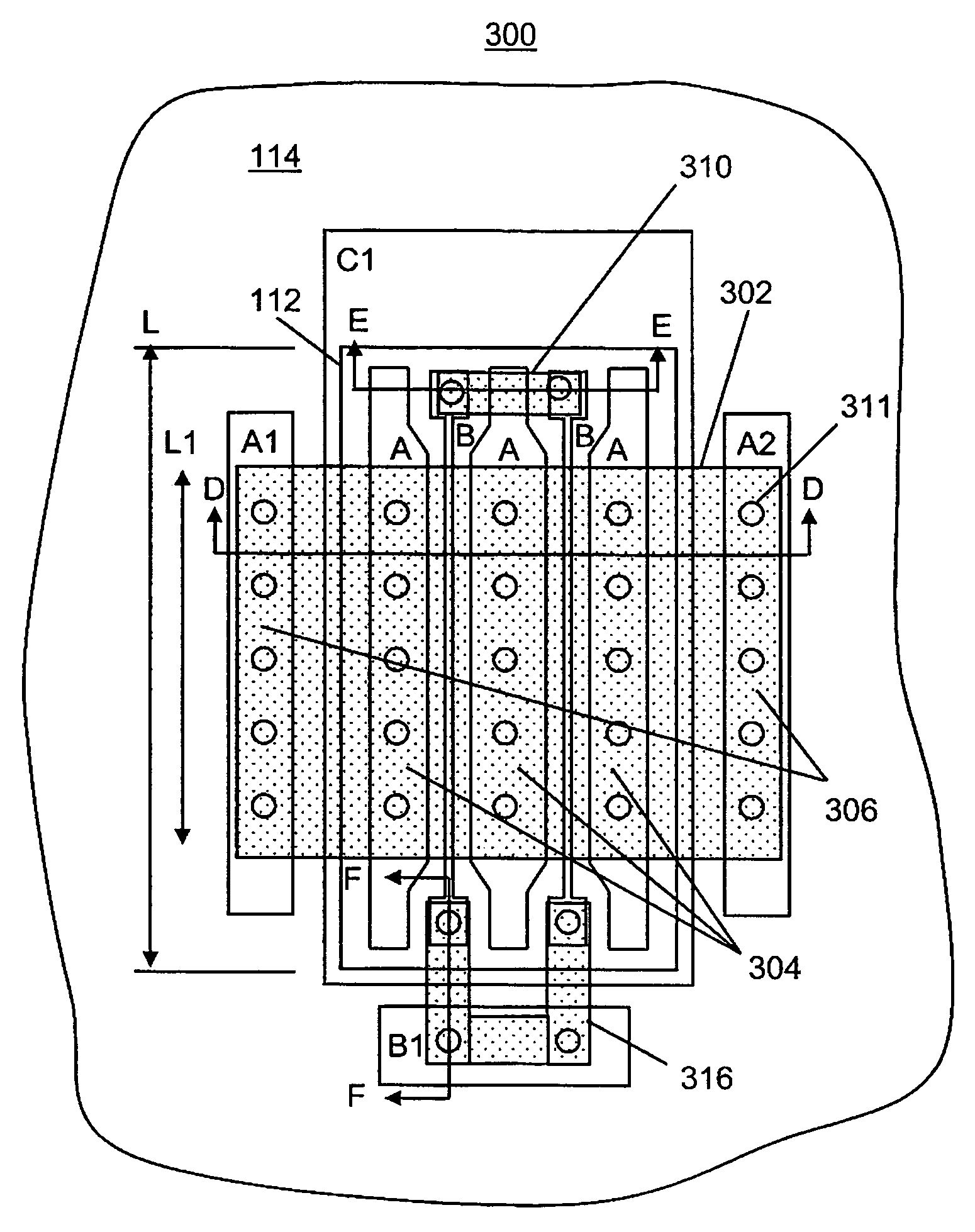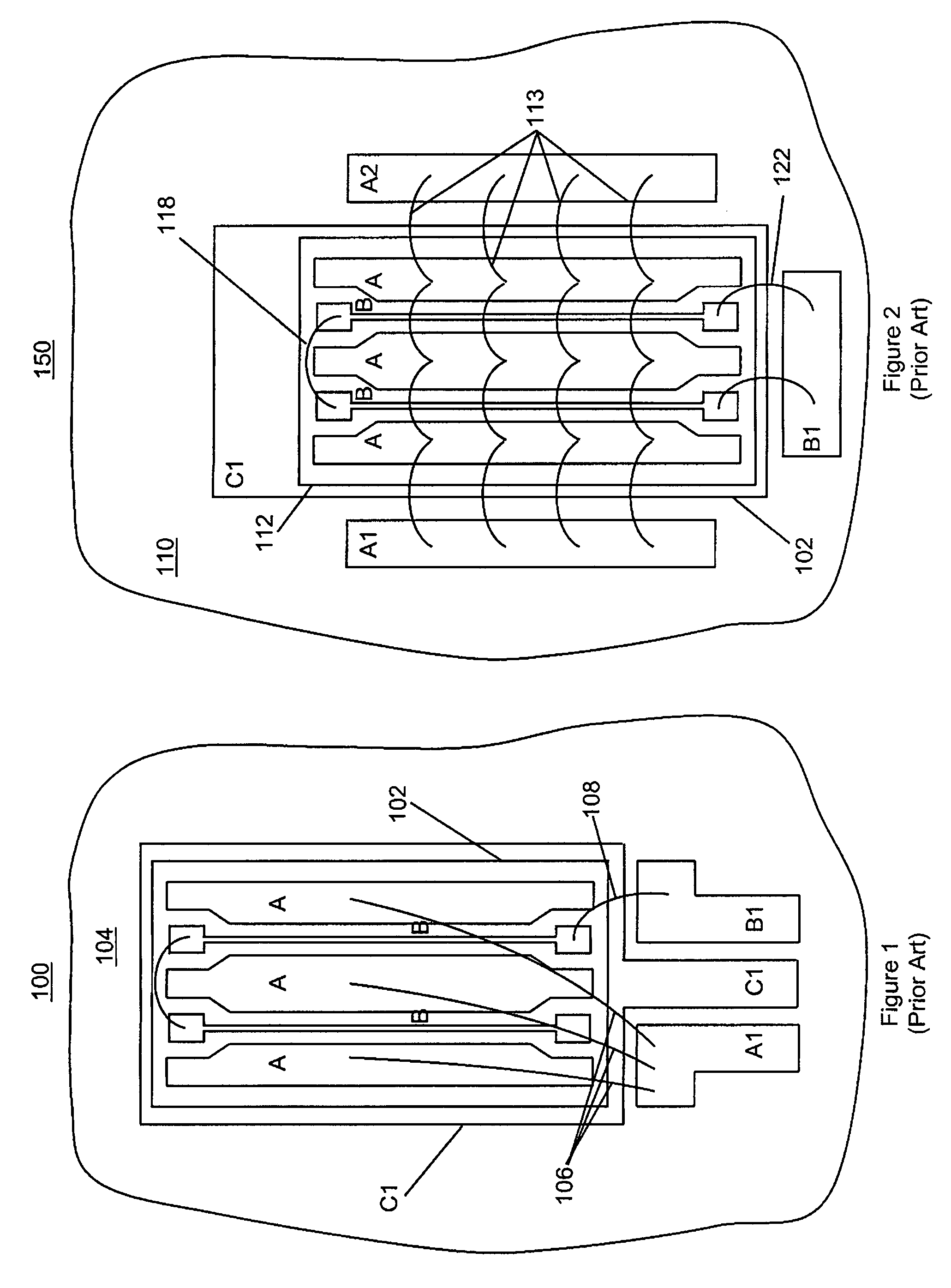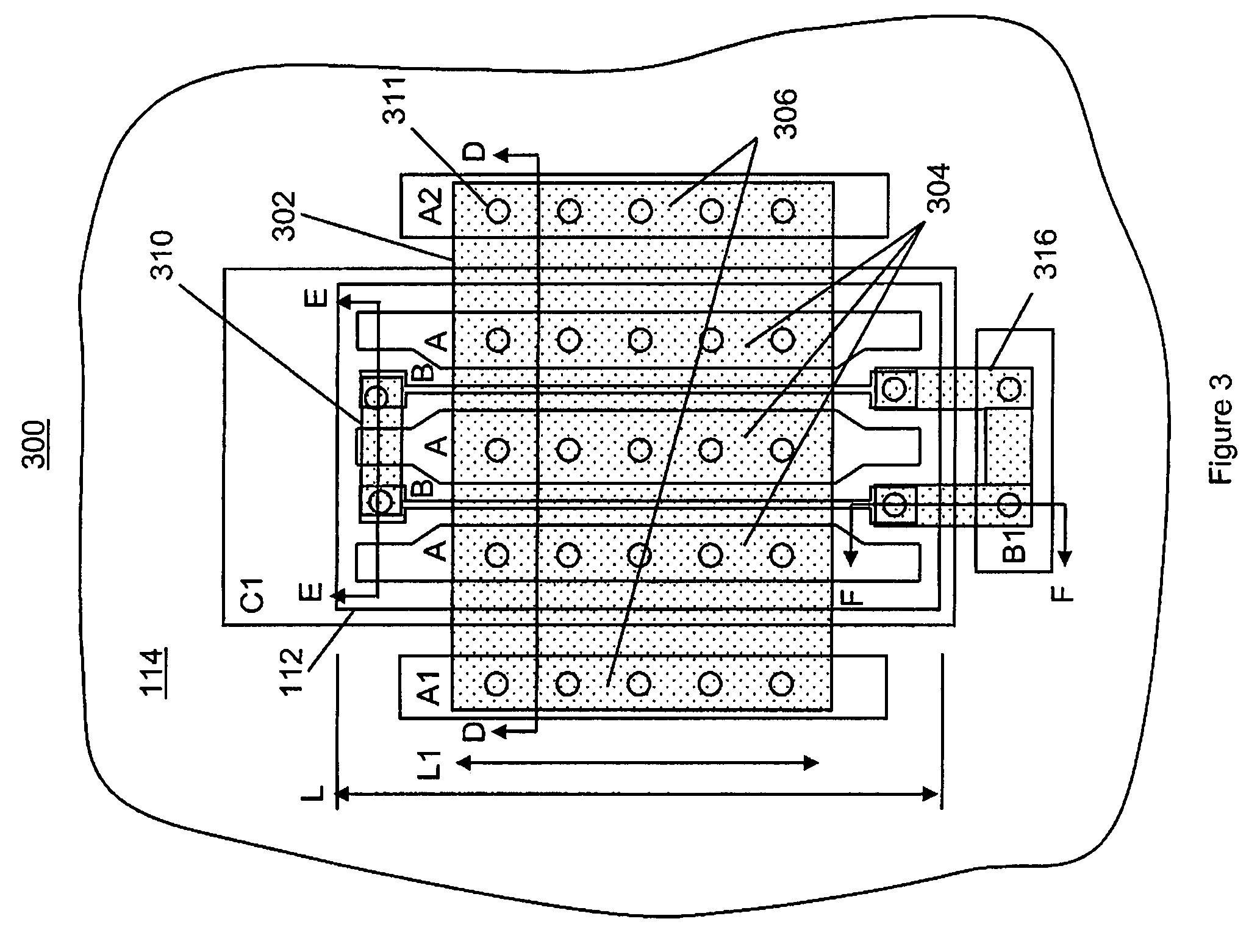Metal foil interconnection of electrical devices
a technology of metal foil and electrical devices, which is applied in the direction of electrical apparatus construction details, semiconductor/solid-state device details, and support structure mounting, etc., can solve the problems of poor ic reliability, ic failure and even explosive failure of the ic, interconnection failure, and increase the cost, volume and weight of the ic, so as to reduce the resistance increase the reliability of the interconnecting elemen
- Summary
- Abstract
- Description
- Claims
- Application Information
AI Technical Summary
Benefits of technology
Problems solved by technology
Method used
Image
Examples
Embodiment Construction
[0040]Referring to FIG. 1 a schematic representation of a first embodiment 100 of a conventional unpackaged electronic device 102 e.g. an integrated circuit (IC) or chip, supported on a substrate module 104 is shown in top view. An outer package or housing, not shown, supports and protects the electronic device 102 and substrate module 104 against moisture and contaminates as well as provides an electromagnetic shield.
[0041]The electronic device 102 includes a plurality of conductive device surfaces A and B, disposed on a top surface of the device 102 and a conductive device surface C, not shown, on the bottom surface of the device 102. Alternately, or additionally, other conductive device surfaces may be disposed on other surfaces of the packaged electronic device 102. Each conductive device surface A, B, and C comprises a conductive metal, e.g. aluminum, or a conductive bondable material, or the like suitable for collecting surface charges thereon and or conducting current thereth...
PUM
| Property | Measurement | Unit |
|---|---|---|
| diameters | aaaaa | aaaaa |
| thickness | aaaaa | aaaaa |
| thick | aaaaa | aaaaa |
Abstract
Description
Claims
Application Information
 Login to View More
Login to View More - R&D
- Intellectual Property
- Life Sciences
- Materials
- Tech Scout
- Unparalleled Data Quality
- Higher Quality Content
- 60% Fewer Hallucinations
Browse by: Latest US Patents, China's latest patents, Technical Efficacy Thesaurus, Application Domain, Technology Topic, Popular Technical Reports.
© 2025 PatSnap. All rights reserved.Legal|Privacy policy|Modern Slavery Act Transparency Statement|Sitemap|About US| Contact US: help@patsnap.com



